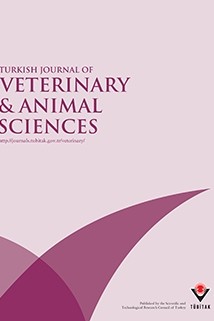
Turkish Journal of Veterinary and Animal Sciences
Yazarlar: İbrahim KAYA, Can UZMAY, Tarık AYYILMAZ
Konular:-
DOI:10.3906/vet-1404-13
Anahtar Kelimeler:Dystocia,Primiparous Holsteins,Milk production,Reproductive measures,Calf loss,Cow culling
Özet: The study investigated effects of dystocia on milk production, reproduction, calf loss, and cow culling in a Turkish Holstein herd at the Agricultural Faculty, Ege University, İzmir, Turkey. Data were from 653 single calvings between 2006 and 2010. Considering a greater dystocia incidence in primiparous cows, data was divided in two; 223 primiparous and 430 multiparous calvings scored on a 1-to-5 scale. Scores were categorized into no dystocia and dystocia. With few related observations, all multiparous data were excluded since sample size for multiparous dystocic calvings was too small to make reliable estimates. Milk yields, days to first service, and days open were analyzed using general linear model univariate procedure. Rates of calf losses, culled cows, retained placenta, and conception within 150 days were compared by chi-squared analysis. Primiparous cows with dystocia produced 85 and 219 kg less milk in 100 and 305 days, respectively (P < 0.10) and showed a higher stillbirth incidence (P < 0.01) than cows without dystocia. However, dystocia had no effects on days to first service and days open. No significant associations existed between dystocia and retained placenta, conception within 150 days, and culling (P > 0.10). One should consider relieving dystocia for good welfare in cows and calves and decreasing its adverse effects on milk yield in primiparous cows.